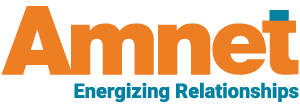In 2025, accessibility is no longer optional; it is a core requirement in digital publishing, especially for educational and government content. XML supports organizations’ adherence to WCAG 2.2 and Section 508 as well as the accessibility guidelines for EPUB. Structured tagging in XML allows content developers, publishers, and instructional designers to make digital content that anyone can easily access, reuse, and alter for different uses, which is pivotal to accessibility compliance and high-quality document accessibility services.
The newly issued WCAG 2.2 was introduced by the W3C in 2023 to help ensure greater access to the web for people with various needs. In addition, EPUB Accessibility 1.0, made by the W3C, provides clear rules for making digital publications easier to use. Because of this standard, eBooks have clear headings, work well with devices for assisting the sight impaired, and are accessible on many reading platforms and tools. Now it follows the principles of accessible EPUB3 and born-accessible publishing.
Why XML Is Essential for Compliance
When information is in an XML format, it can be structured and tagged, making it understandable and accessible to various assistive aids. When headings, tables, figures, alt-text, and footnotes are correctly tagged with XML, both computers and users can easily access and view the information. This is a foundational approach offered by XML conversion services and supports scalable document accessibility services across multiple platforms.
It is very helpful that XML is format independent because content and design are split in XML; it is possible to use the material for HTML, EPUB, or accessible PDFs without compromising on accessibility. This attribute follows Section 508, as it ensures that digital content is compatible with assistive technology, thus providing the backbone for accessible EPUB outputs.
XML in Educational and Scientific Publishing
Top digital content development companies and instructional design services now use XML-first workflows to produce accessible K–12 and higher education materials. Using various standards and tools, publishers can now distribute learning content in audio, braille, and large-print formats. This ensures resources are born accessible and fully aligned with accessibility compliance.
Scientific journals also rely on XML workflows for accessible peer-reviewed publishing. Leading academic editorial services tag complex elements such as math equations, references, and figures, ensuring full accessibility throughout the publishing process using document accessibility services.
Looking forward to real-time data, according to the WebAIM Million 2025 report, 94.8 percent of the top million home pages had detectable WCAG 2.0 failures. This marks a slight improvement from 95.9 percent in 2024. Common issues included low-contrast text (79.1%), missing alternative text for images (55.5%), and missing form input labels (48.2%).
These statistics underscore the critical need for improved web accessibility compliance across various sectors in the United States, emphasizing the importance of adhering to standards like WCAG 2.2 and Section 508.
XML will still support the growth and accessibility of content in the publishing industry in 2025. XML is important to content creators, editorial services, and academic publishers, as it promotes both inclusion and digital equality, solidifying its role in delivering web accessibility solutions and scalable XML conversion services.
Amnet is a one-stop solutions provider for digital content conversion. We offer end-to-end digital conversion solutions tailored for diverse online platforms. We guide clients in choosing the most effective approach for their business needs, ensuring maximum audience reach. With expertise in XML workflows—both XML-First and XML-Last—we deliver advanced EPUB services that transform even basic content into accessible, technology-enabled formats. Get in touch with our expert team today.
Sources
- https://elfsight.com/blog/website-accessibility-statistics/.
- https://webaim.org/projects/million/.



